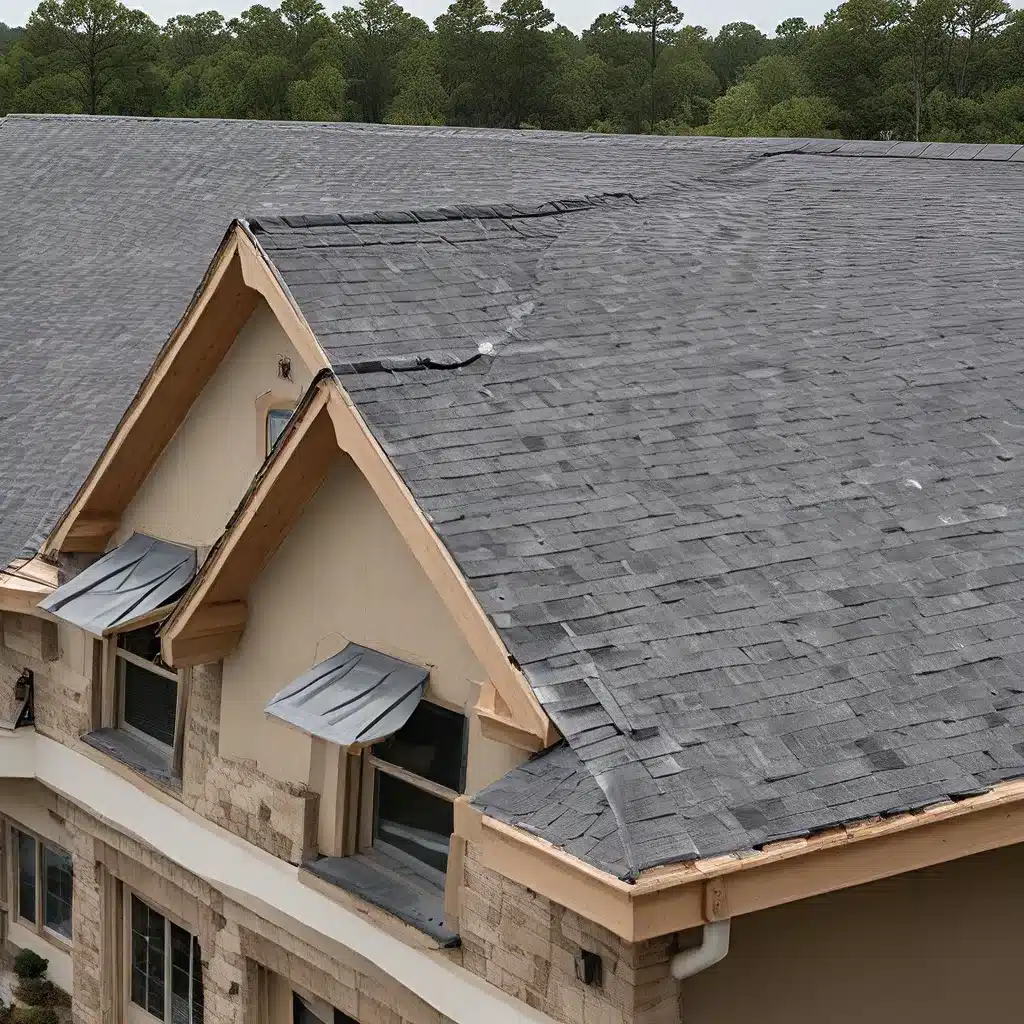
As someone who’s spent more time than I’d like to admit staring up at my roof, wondering if it’s doing its job, I know how important it is to get the design and pitch just right. And when it comes to roofing in the hot, sunny, and sometimes unpredictable Southern climate, that task becomes even more crucial.
The Importance of Roof Pitch
Let’s start with the basics – roof pitch. This seemingly simple detail can have a profound impact on the overall performance and efficiency of your roofing system. After all, the pitch or slope of your roof directly affects everything from water runoff and drainage to solar energy absorption and insulation efficiency.
In the Southern climate, where heavy rainfall and intense sun exposure are the norm, a well-designed roof pitch is essential. Too shallow of a pitch can lead to pooling water and increased risk of leaks, while too steep of a pitch can make the roof more vulnerable to wind damage and decreased energy efficiency.
So, what’s the sweet spot? Experts suggest that a roof pitch between 25-30 degrees is typically the most optimal for Southern regions. This range allows for efficient water drainage, while still maximizing solar energy capture and maintaining good insulation properties.
The Role of Roof Design
But roof pitch is just one piece of the puzzle. The overall design of your roof can also have a major impact on its performance and energy efficiency.
Recent studies have shown that certain roof shapes can dramatically improve a home’s solar energy generation and cooling costs in hot climates. One particularly interesting finding is the potential benefits of an oblique shed roof design.
Compared to traditional gable or hip roof styles, an oblique shed roof with a 25-degree tilt angle, 170-175 degree azimuth angle, and an aspect ratio of 1.12 can generate up to 15-20% more solar radiation over the course of a year. This is due to the optimized orientation and better alignment with the sun’s path in the Southern sky.
Additionally, this oblique shed roof design can improve insulation and reduce cooling loads by minimizing the surface area exposed to the intense Southern sun. Coupled with the right pitch, this roof shape can be a game-changer for energy-efficient and environmentally-friendly homes in the South.
Putting it All Together
Of course, roof design and pitch are just two pieces of the puzzle when it comes to optimizing your roofing for the Southern climate. Factors like the type of roofing material, ventilation, and insulation also play a critical role in overall performance and energy efficiency.
That’s why it’s so important to work with a reputable roofing company like Southern Roofing Co. that understands the unique challenges and best practices for Southern roofing. They can help you navigate all the design considerations, recommend the right materials, and ensure your roof is performing at its best.
And don’t forget – regular maintenance and inspections are also crucial for keeping your roof in top shape and maximizing its lifespan. Small issues like clogged gutters or loose shingles can quickly turn into big problems if left unchecked.
So, whether you’re building a new home or looking to upgrade your existing roof, make sure you prioritize the right pitch and design for optimal performance in the Southern climate. Your energy bills, roof lifespan, and overall home comfort will thank you for it.
Exploring New Frontiers
Of course, the world of roofing is constantly evolving, and researchers are always exploring new and innovative solutions to improve efficiency and sustainability.
For example, some experts believe that integration of solar energy into roofing systems could be a game-changer for Southern homes. By combining the optimal roof design with built-in photovoltaic panels, homeowners could potentially generate their own clean energy while also optimizing their roofing for the local climate.
Additionally, ongoing studies are investigating the potential of cool roof technologies, green roofs, and dynamic insulation to further enhance the energy efficiency and environmental impact of residential roofing.
While these cutting-edge solutions may not be widely available just yet, it’s an exciting time for the roofing industry. As research continues, we can expect to see even more innovative and impactful roofing options emerge in the years to come.
So, keep an eye out for these developments, and don’t be afraid to explore the latest and greatest in roofing technology when it comes time to update or replace your home’s roof. The future of Southern roofing is bright, and the possibilities are endless.